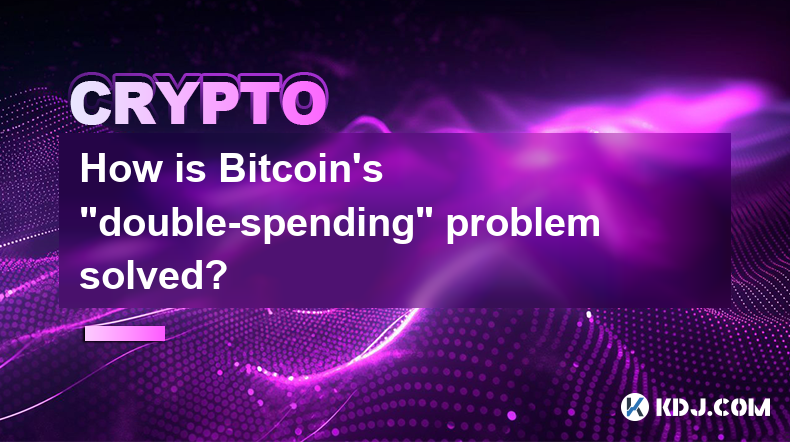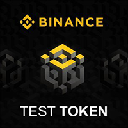-
 Bitcoin
Bitcoin $96,571.5288
1.42% -
 Ethereum
Ethereum $2,769.2094
4.64% -
 XRP
XRP $2.5746
1.61% -
 Tether USDt
Tether USDt $1.0001
0.09% -
 BNB
BNB $670.9377
4.36% -
 Solana
Solana $172.1288
1.70% -
 USDC
USDC $1.0001
0.03% -
 Dogecoin
Dogecoin $0.2464
3.00% -
 Cardano
Cardano $0.7748
2.46% -
 TRON
TRON $0.2376
0.68% -
 Chainlink
Chainlink $17.7887
2.86% -
 Avalanche
Avalanche $25.8670
7.26% -
 Sui
Sui $3.4139
4.44% -
 Stellar
Stellar $0.3361
3.98% -
 Litecoin
Litecoin $126.1051
0.20% -
 Shiba Inu
Shiba Inu $0.0...01562
4.07% -
 Toncoin
Toncoin $3.6928
4.45% -
 Hedera
Hedera $0.2166
4.65% -
 UNUS SED LEO
UNUS SED LEO $9.7076
-0.32% -
 Hyperliquid
Hyperliquid $24.8764
1.07% -
 Polkadot
Polkadot $5.0643
0.56% -
 MANTRA
MANTRA $7.5962
0.43% -
 Bitcoin Cash
Bitcoin Cash $321.9865
2.99% -
 Ethena USDe
Ethena USDe $0.9994
0.15% -
 Bitget Token
Bitget Token $4.9012
4.83% -
 Uniswap
Uniswap $8.9537
2.44% -
 Dai
Dai $1.0001
0.05% -
 Monero
Monero $235.3600
1.60% -
 NEAR Protocol
NEAR Protocol $3.4797
6.62% -
 Pepe
Pepe $0.0...09622
5.20%
How does Bitcoin's distributed ledger ensure consistency?
Bitcoin's distributed ledger employs a consensus mechanism, timestamped transactions, and cryptographic hashing to ensure consistency and prevent tampering or corruption.
Feb 22, 2025 at 10:06 pm

Key Points:
- Bitcoin employs a distributed ledger, also known as a blockchain, to maintain a tamper-proof and consistent record of transactions.
- The blockchain is a decentralized network of computers that collectively validate and store transaction data.
- Bitcoin's distributed ledger ensures consistency through consensus mechanisms and cryptographic algorithms.
How does Bitcoin's distributed ledger ensure consistency?
1. Decentralized Network:
- Bitcoin's blockchain network consists of thousands of miners, each running a full node.
- Nodes store a complete copy of the blockchain and validate transactions independently.
- This decentralized structure prevents any single entity from manipulating or corrupting the ledger.
2. Consensus Mechanisms:
- The most critical aspect of Bitcoin's distributed ledger is its consensus mechanism, which ensures that all nodes agree on the state of the ledger.
- The Proof-of-Work (PoW) mechanism, used in Bitcoin, requires miners to solve complex mathematical puzzles to validate transactions.
- The winner of the puzzle broadcasts their solution to the network, and all other nodes verify its validity.
- The consensus mechanism ensures that only valid transactions are added to the blockchain, fostering consistency.
3. Immutable Blockchain:
- Bitcoin's blockchain design employs cryptographic hashing functions to create an immutable ledger.
- Each transaction is recorded as a block, which includes a unique hash value.
- The hash value is generated from the data in the block and the hash value of the previous block.
- Any attempt to alter a block in the blockchain would invalidate its hash value, making it easily detectable by other nodes and rejected.
4. Time-Stamped Transactions:
- Transactions on the Bitcoin blockchain are timestamped, providing temporal consistency.
- Each block in the blockchain contains a timestamp, representing the time when the block was added to the ledger.
- This chronologically ordered record of transactions ensures that the sequence of events is maintained, preventing double-spending or other inconsistencies.
5. Finality and Confirmation:
- Bitcoin transactions are not immediately considered final but require confirmation.
- Once a transaction is included in a block, it is considered one confirmation.
- The more confirmations a transaction receives, the less likely it is to be reversed.
- This process of confirmation enhances the consistency of the ledger by reducing the possibility of fraudulent or erroneous transactions being accepted.
FAQs:
Q: What is a distributed ledger?
A: A distributed ledger is a digital record of transactions that is shared across a network of computers. Each computer has a complete copy of the ledger, and any changes must be validated by the majority of the network before they are accepted.
Q: How does Bitcoin's distributed ledger differ from traditional databases?
A: Traditional databases are centralized, meaning that they are stored on a single server. This makes them vulnerable to hacking and data loss. Bitcoin's distributed ledger is decentralized, meaning that it is stored on a network of computers, making it more secure and resilient.
Q: What is the purpose of a consensus mechanism in Bitcoin?
A: The consensus mechanism in Bitcoin is used to ensure that all nodes in the network agree on the state of the ledger. This is necessary to prevent double-spending and other types of fraud.
Disclaimer:info@kdj.com
The information provided is not trading advice. kdj.com does not assume any responsibility for any investments made based on the information provided in this article. Cryptocurrencies are highly volatile and it is highly recommended that you invest with caution after thorough research!
If you believe that the content used on this website infringes your copyright, please contact us immediately (info@kdj.com) and we will delete it promptly.
- BTC Price Stabilizes as Stock Indices and ETFs Retreat
- 2025-02-23 03:30:25
- BlockDAG Affiliate Program Turns Passive Income into Reality
- 2025-02-23 03:30:25
- XRP Nears Critical Resistance Level, Breakout Scenario in Play
- 2025-02-23 03:30:25
- Grayscale’s XRP ETF Filing Now Under Review, Market Eyes $3 Resistance Break
- 2025-02-23 03:30:25
- 7 Best Altcoins To Buy Now – High-growth Cryptos Gaining Momentum This Week
- 2025-02-23 03:30:25
- Choosing Wisely: Why XRP Could Be Your Best $1,000 Investment in Crypto
- 2025-02-23 03:30:25
Related knowledge

What are the long-term investment risks of Bitcoin?
Feb 22,2025 at 05:30pm
Key PointsVolatility and price fluctuationsRegulatory uncertaintySecurity risksCompetition from altcoinsMarket manipulation and scamsTransaction feesEnvironmental concernsLong-Term Investment Risks of BitcoinVolatility and Price FluctuationsBitcoin's high volatility is a double-edged sword. While it has the potential to generate substantial returns, it ...

What are the main contents of Bitcoin's "white paper"?
Feb 21,2025 at 04:36am
Key Points:Understanding Bitcoin's Genesis: The White Paper's IntroductionA Decentralized Digital Currency: Bitcoin's Core ConceptBlockchain Technology: The Foundation of Bitcoin's Immutable LedgerProof-of-Work: Securing Bitcoin's NetworkThe Design of Bitcoin's Currency: Issuance, Scarcity, and DivisibilityBitcoin's Potential Applications and Future Pro...

How does Bitcoin's distributed ledger ensure consistency?
Feb 22,2025 at 10:06pm
Key Points:Bitcoin employs a distributed ledger, also known as a blockchain, to maintain a tamper-proof and consistent record of transactions.The blockchain is a decentralized network of computers that collectively validate and store transaction data.Bitcoin's distributed ledger ensures consistency through consensus mechanisms and cryptographic algorith...

What does the Cryptographic Fundamentals of Bitcoin consist of?
Feb 21,2025 at 12:06pm
Key PointsUnderstanding the cryptographic algorithms used in BitcoinFamiliarization with the Bitcoin blockchain and its underlying mechanicsExamination of the security measures that protect Bitcoin from attackAnalysis of the decentralized nature of Bitcoin and its implicationsDiscussion of the scalability and transaction fee issues associated with Bitco...

What is Bitcoin's relationship with blockchain technology?
Feb 22,2025 at 07:00pm
Bitcoin's Intertwined Relationship with Blockchain TechnologyKey Points:Definition of blockchain technology and its decentralized natureBitcoin's utilization of blockchain for secure and immutable transactionsThe role of blockchain in verifying and confirming transactionsEvolution of blockchain technology beyond Bitcoin's cryptocurrency applicationsUnde...

How is Bitcoin's "double-spending" problem solved?
Feb 23,2025 at 02:54am
Key Points:The double-spending problem refers to the potential for a digital currency transaction to be reversed, allowing the same funds to be spent multiple times.Bitcoin solves this problem through the use of a decentralized blockchain, a public ledger that records all transactions permanently and securely.The immutability and transparency of the blo...

What are the long-term investment risks of Bitcoin?
Feb 22,2025 at 05:30pm
Key PointsVolatility and price fluctuationsRegulatory uncertaintySecurity risksCompetition from altcoinsMarket manipulation and scamsTransaction feesEnvironmental concernsLong-Term Investment Risks of BitcoinVolatility and Price FluctuationsBitcoin's high volatility is a double-edged sword. While it has the potential to generate substantial returns, it ...

What are the main contents of Bitcoin's "white paper"?
Feb 21,2025 at 04:36am
Key Points:Understanding Bitcoin's Genesis: The White Paper's IntroductionA Decentralized Digital Currency: Bitcoin's Core ConceptBlockchain Technology: The Foundation of Bitcoin's Immutable LedgerProof-of-Work: Securing Bitcoin's NetworkThe Design of Bitcoin's Currency: Issuance, Scarcity, and DivisibilityBitcoin's Potential Applications and Future Pro...

How does Bitcoin's distributed ledger ensure consistency?
Feb 22,2025 at 10:06pm
Key Points:Bitcoin employs a distributed ledger, also known as a blockchain, to maintain a tamper-proof and consistent record of transactions.The blockchain is a decentralized network of computers that collectively validate and store transaction data.Bitcoin's distributed ledger ensures consistency through consensus mechanisms and cryptographic algorith...

What does the Cryptographic Fundamentals of Bitcoin consist of?
Feb 21,2025 at 12:06pm
Key PointsUnderstanding the cryptographic algorithms used in BitcoinFamiliarization with the Bitcoin blockchain and its underlying mechanicsExamination of the security measures that protect Bitcoin from attackAnalysis of the decentralized nature of Bitcoin and its implicationsDiscussion of the scalability and transaction fee issues associated with Bitco...

What is Bitcoin's relationship with blockchain technology?
Feb 22,2025 at 07:00pm
Bitcoin's Intertwined Relationship with Blockchain TechnologyKey Points:Definition of blockchain technology and its decentralized natureBitcoin's utilization of blockchain for secure and immutable transactionsThe role of blockchain in verifying and confirming transactionsEvolution of blockchain technology beyond Bitcoin's cryptocurrency applicationsUnde...

How is Bitcoin's "double-spending" problem solved?
Feb 23,2025 at 02:54am
Key Points:The double-spending problem refers to the potential for a digital currency transaction to be reversed, allowing the same funds to be spent multiple times.Bitcoin solves this problem through the use of a decentralized blockchain, a public ledger that records all transactions permanently and securely.The immutability and transparency of the blo...
See all articles




















































































